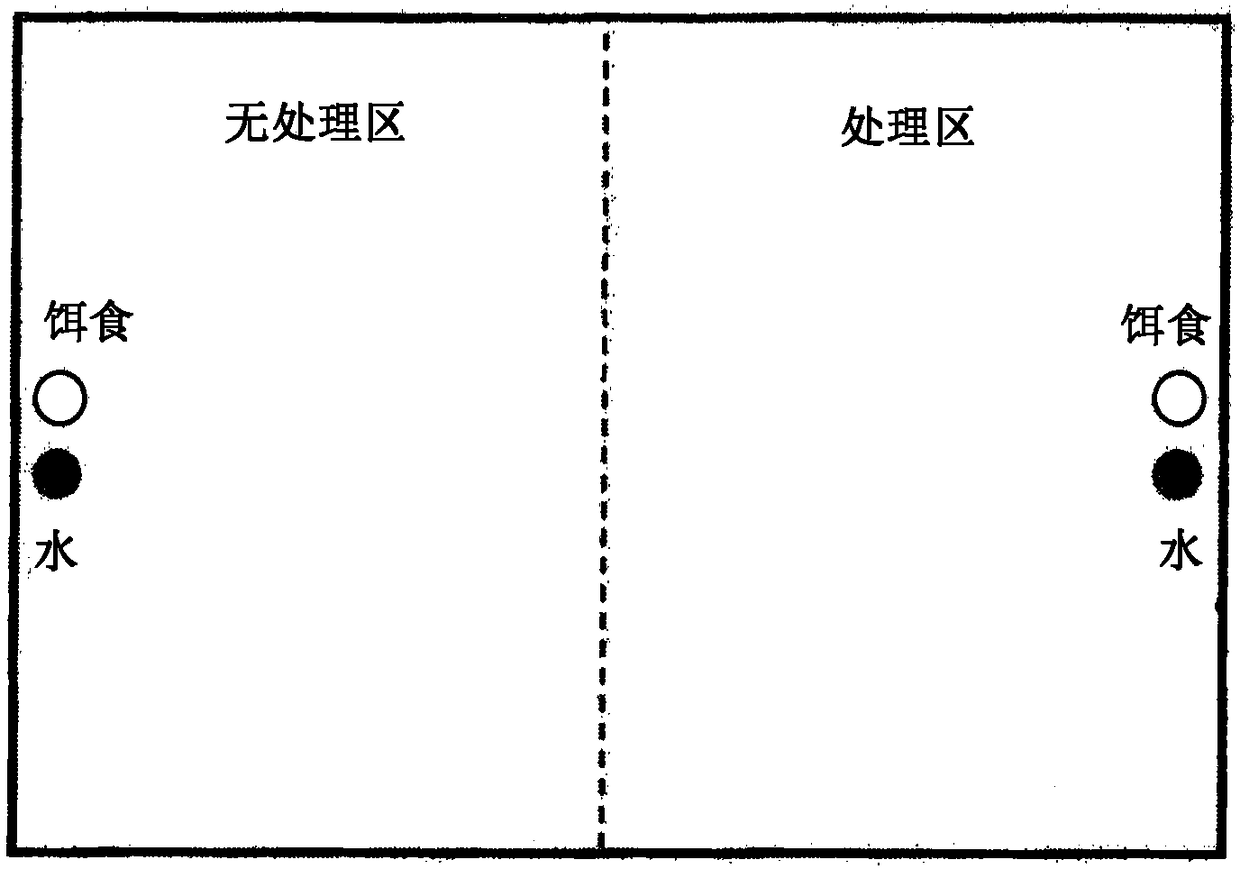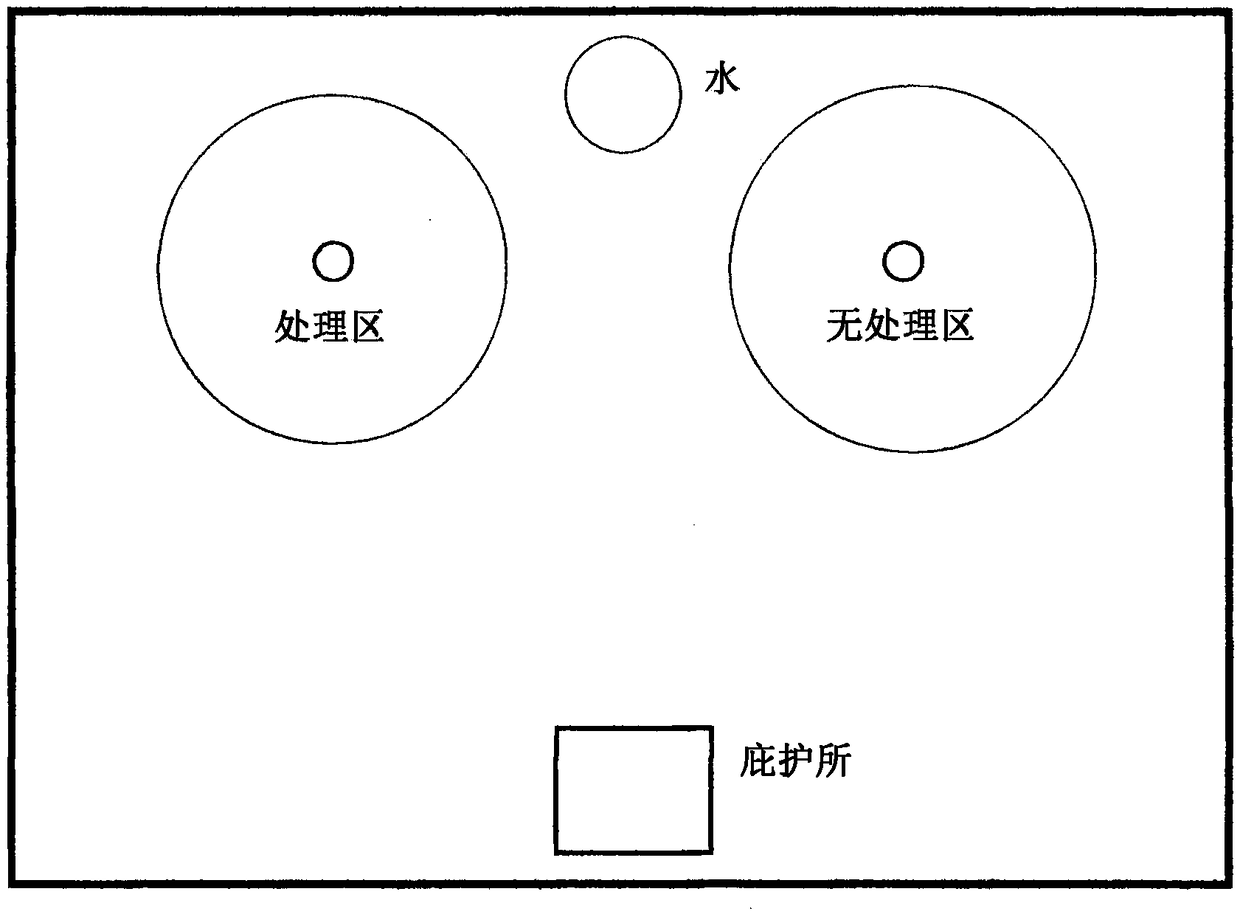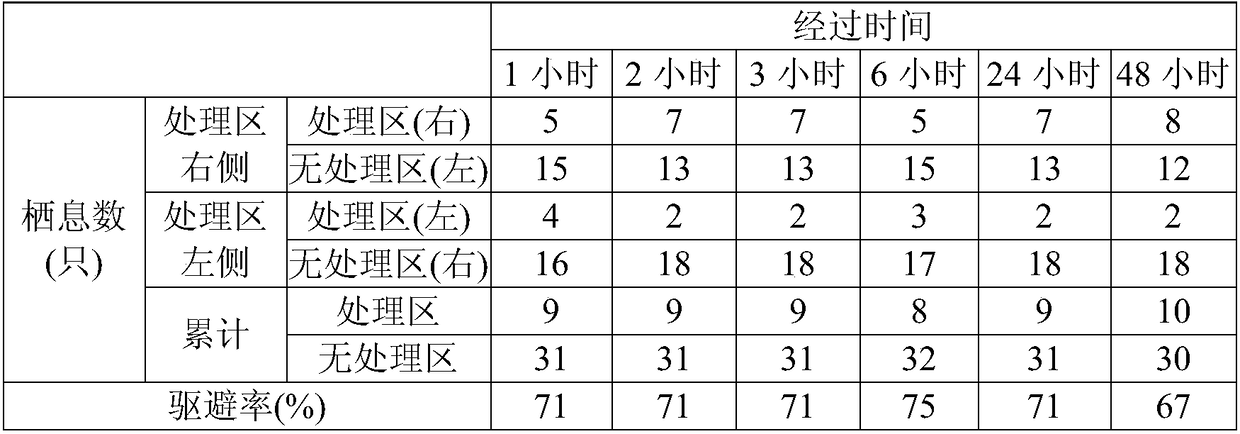Pest repellent material and pest repelling method using same
A pest repellent, ring-type technology, applied in the field of pest repellents, can solve the problems of increasing pesticides, insufficient persistence of pest repelling effects, disappearance of pesticide effects, etc., and achieves the effect of high safety
- Summary
- Abstract
- Description
- Claims
- Application Information
AI Technical Summary
Problems solved by technology
Method used
Image
Examples
Embodiment 1
[0096] Prepare 2 sets of non-woven fabric pieces cut into a size of 300mm×400mm, and use 1.0g / m in one piece 2 Each test substance shown in Table 2 diluted with acetone was uniformly impregnated. The other sheet was impregnated with acetone only.
[0097] A polypropylene container of 600 mm x 400 mm x 210 mm (height) was used as a test box. In order to prevent the escape of the test insects (cockroaches), shortening was applied to the entire surface of the inner wall of the container.
[0098]The above-mentioned sheets were air-dried for about 1 hour respectively, and the sheets impregnated with each test substance were placed on one side of the bottom of the container as a treatment area. A sheet impregnated with only acetone was placed on the other side of the bottom of the container as a no-treatment zone.
[0099] Such as figure 1 As shown, place respectively the bait and the water container that cockroach is housed in the treatment area and no treatment area, as the t...
Embodiment 2
[0113] A large bucket made of polypropylene of 340 mm x 260 mm x 110 mm (height) was used as a test chamber. In order to prevent the escape of test insects (cockroaches), Vaseline was applied to the upper 1 / 2 of the inner wall.
[0114] Such as figure 2 As shown, a wooden shelter (12mm × 10mm × 8mm (height)) and a petri dish (diameter 60mm, height 15mm) are provided with water in the test box in advance, as the test insects, put the German small 60 cockroach adults (30 males and 30 females) were domesticated in the test box.
[0115] Prepare 2 sets of 2 non-woven sheets cut into a circle with a diameter of 125mm, and only in one sheet at 1.0g / m 2 Each test substance shown in Table 3 was uniformly impregnated. Set the sheets opposite each other in the test chamber, so that the sheet impregnated with each test substance is the treatment area, and the sheet without any impregnation is the non-treatment area. A container (diameter 30 mm, height 6 mm) filled with weighed solid...
Embodiment 3
[0123] As a test box, the same 600 mm x 400 mm x 210 mm (height) polypropylene container as in Example 1 was used. In order to prevent the escape of the test insects (cockroaches), shortening was applied to the entire surface of the inner wall of the container.
[0124] Prepare 2 sets of PET resin plates cut into 300mm x 400mm pieces, wipe the surface of one resin plate evenly with a non-woven fabric impregnated with a solution containing 2.0% by mass of each test substance shown in Table 4, as a processing area. The surface of the other resin plate was not treated in any way, and it was regarded as the no-treatment area.
[0125] Such as figure 1 As shown, set the resin sheet with no processing area and the resin sheet with processing area, such as figure 1 Place the container that bait and water are housed as shown, as the worm for testing, put 10 adults (5 males and 5 females) and 10 larvae of Periplaneta melanogaster into the test box, a total of 20 larvae. Observe the...
PUM
| Property | Measurement | Unit |
|---|---|---|
| Diameter | aaaaa | aaaaa |
Abstract
Description
Claims
Application Information
 Login to View More
Login to View More - R&D Engineer
- R&D Manager
- IP Professional
- Industry Leading Data Capabilities
- Powerful AI technology
- Patent DNA Extraction
Browse by: Latest US Patents, China's latest patents, Technical Efficacy Thesaurus, Application Domain, Technology Topic, Popular Technical Reports.
© 2024 PatSnap. All rights reserved.Legal|Privacy policy|Modern Slavery Act Transparency Statement|Sitemap|About US| Contact US: help@patsnap.com










